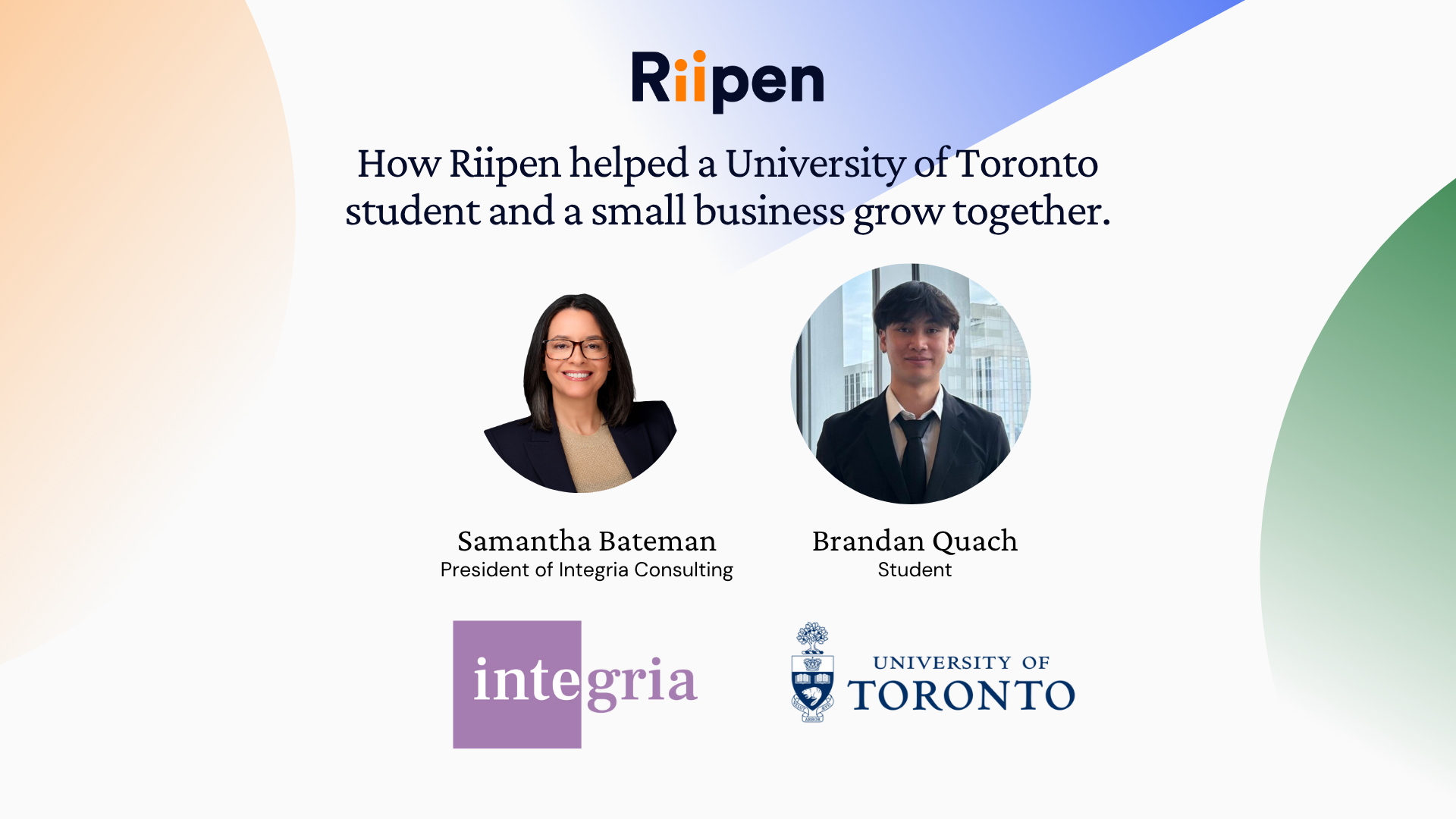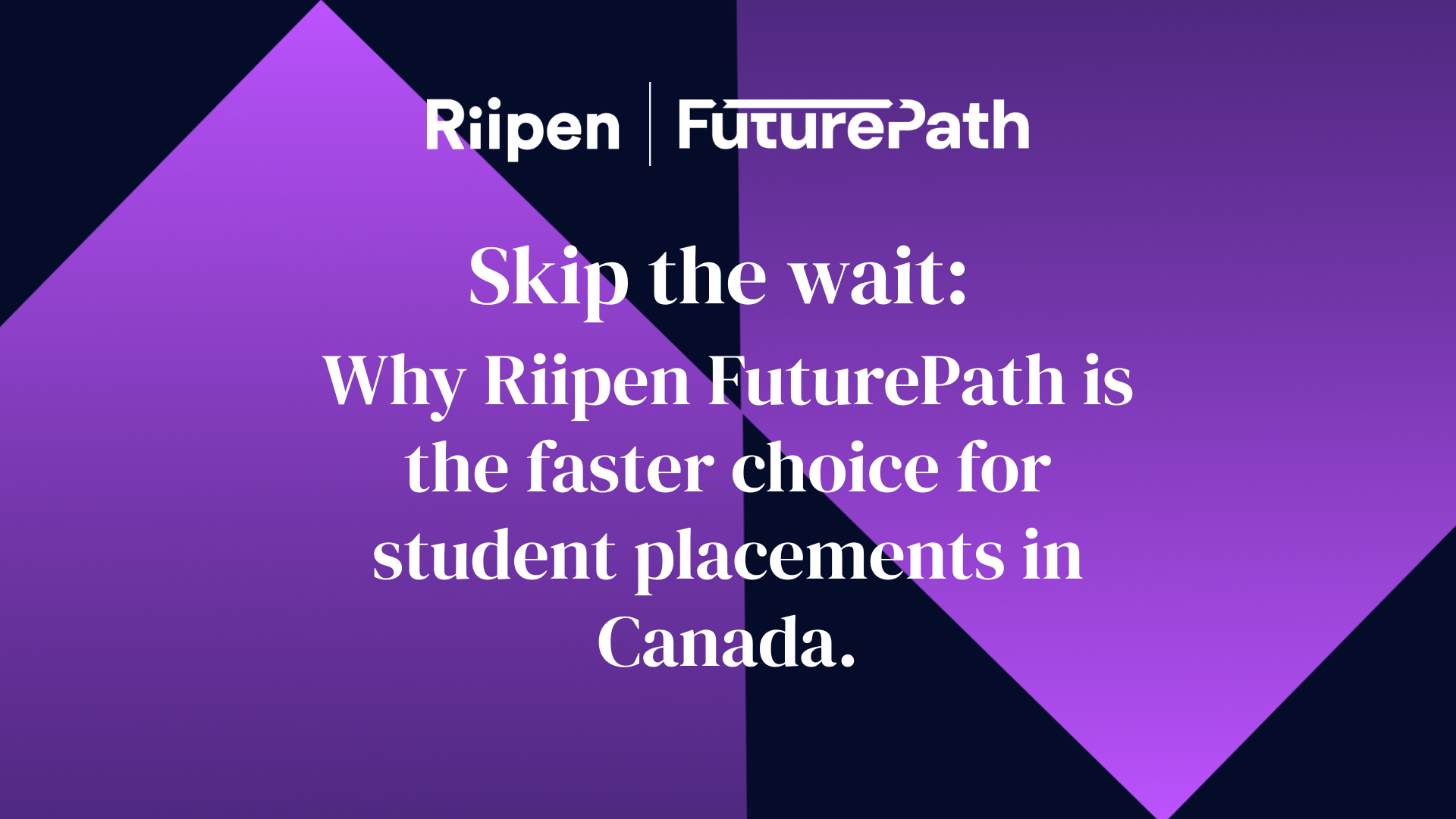Benefits of work-based learning (work-integrated learning) for educators, students, and employers

Across the nation, institutions of higher learning are grappling with a pressing issue: Enrollment rates are dipping. Why?
Fresh graduates, clutching their diplomas, step into real world only to find that all their years in the classroom doesn’t quite translate into the hands-on skills employers seek.
In fact, 40% of business leaders feel that recent graduates (from the 2020-2023 classes) are unprepared for the workforce with 46% of them putting the onus on educators—which is both frustrating and unfair representation of the amount of effort that goes into build courses to set students up for success.
The disconnect between the classroom and the workplace can lead graduates to feeling disillusioned and employers frustrated. But what if there's a remedy that could bridge this gap?
An education revolution that fuses real-world experience with traditional learning. That's exactly the promise of work-based learning.
In this article, we will explore how work-based learning is a proven strategy for delivering authentic, skill-developing experiences and has been helping to reshape the very fabric of higher education and respond to the evolving demands of the job market.
Key takeaways
- Work-based learning amplifies the educational landscape, enhancing student engagement, retention, and enrollment.
- Through WBL, every student, regardless of background, is provided an equal platform to hone skills, garner real-world experience, and establish valuable industry ties.
- Employers leveraging WBL gain a head start in talent acquisition, benefiting from first-hand insights into a candidate's skills and dedication to work.
Why work-based learning (work-integrated learning)?
Remember those days when a student would ask, "When will I ever use this in real life?" With work-based learning (WBL), students actually get to answer it.
The relevance of their studies is no longer an abstract concept but a tangible experience of hands-on projects derived from real-world challenges, fueling their passion and engagement.
As they weave through these programs, they're not just accumulating skills; they're building relationships. Interacting with professionals allows them to understand industry nuances, exposing them to a diverse range of industries, employers, and roles.
This interaction not only widens their horizons but also offers equity in learning experiences. By engaging with multiple sectors, students from varied backgrounds get the chance to discover and develop their work skills. They get exposed to different types of industries and employers that they might not have encountered otherwise.
This breadth of exposure leads to greater career clarity. It helps students understand their passions and drives, keeping them focused and improving retention in their chosen paths.
On top of that, building a network during these formative years might just be the bridge to their dream job in the future. By fostering connections early on, students are positioned to tap into these relationships when job seeking, ensuring a more level playing field for all regardless of background.
Work-based learning isn't just about teaching; it's about ensuring every student, irrespective of their starting point, gets an equitable shot at realizing their potential and securing their dream career.
Benefits of work-based learning for educators
Educators aim to offer enriching and relevant learning experiences. Work-based learning (WBL) provides several advantages:
Improve educational and employment outcomes
One of the primary advantages of integrating WBL into the curriculum is the chance to move beyond textbook scenarios and collaborate with industry partners on real-world challenges.
This enriches classroom discussions and strengthens students' connection with the material, driving engagement and mastery of the subject matter. Plus, it provides career clarity and helps with retention.
Improve student engagement, retention, and enrollment
Engaging course content is central to student success. By offering students WBL projects, educators present students with practical challenges professionals encounter in their respective fields, letting them get up close and personal with what they will experience in the workplace.
This immersive experience allows students to directly grasp the applicability of their studies, making them more likely to stay dedicated and complete their programs.
This hands-on experience not only sparks student interest but also reinforces the relevance of their studies, leading to higher levels of engagement. It can also boost enrollment figures, as satisfied students often become ambassadors for their programs, attracting new students.
While word-of-mouth testimonies are powerful, admissions teams armed with tangible data from WBL experiences have the opportunity to highlight potential outcomes and equity of these opportunities.
This strengthens the appeal for prospective students, ensuring that every learner has the chance to tap into valuable experiences that might traditionally depend on individual effort, like seeking internships.
Authentic learning in the age of AI
In the shadow of AI's overwhelming presence, the educational realm faces unprecedented challenges like AI-crafted content. While these technologies can offer unprecedented aids, they also pose challenges in assessing genuine student understanding and effort.
However, WBL projects stand out as a solution to this dilemma. Unlike traditional tasks which might be susceptible to AI-generated solutions, WBL requires students to actively engage in real-world teamwork, problem-solving, and critical thinking that cannot be replicated through AI.
These hands-on projects show that students really understand their course and are putting in genuine effort. By embracing these authentic experiences, educators can reduce the risks associated with AI-generated submissions and ensure that the learning process remains genuine, immersive, and irreplaceable.
Benefits of work-based learning for students
Educators aren't the only ones who benefit from WBL. After all, the whole point is to help students get the most out of their educational journey as possible. Let's take a closer look at some of the ways students profit from this approach:
Career clarity through real-world exposure
Engaging in WBL provides students with practical exposure to industries, job roles, and professional scenarios. By working on authentic projects and challenges, students gain/develop a clearer understanding of the day-to-day realities of the profession, making it easier for them to discover how this aligns with their passion and career aspirations.
Increased employability and career readiness
In today's competitive job market, employers are on the lookout for candidates with hands-on experience. But it can be more difficult to get experience without getting a job.
WBL offers students the invaluable opportunity to gain and demonstrate this experience before they even graduate. Through WBL, students can hone essential soft skills like teamwork, communication, and problem-solving, all while building a robust portfolio of completed real-world projects and feedback from industry practitioners on the students’ work.
This proactive approach not only makes them more competitive to potential employers but also instills a sense of confidence and readiness as they embark on their career journey.
Access to equitable opportunities
Unlike traditional internships, which often favor learners with existing networks, contacts, or family connections to secure positions, WBL ensures that everyone, regardless of their background or connections, has an opportunity to gain valuable professional experiences.
This approach levels the playing field, making certain that all learners have an equal chance to develop skills, gain first-hand experience, and enhance their future employability.
Plus, they are presented with opportunities to foster relationships with potential future colleagues and connect with other employers outside of their existing communities, building out a professional network that might take years to develop otherwise. These connections can provide guidance, mentorship, and even job opportunities post-graduation.
Benefits of work-based learning for employers and business leaders
The implementation of WBL isn't merely advantageous for college students and educators. Employers and business leaders stand to reap significant benefits from integrating these programs, such as:
Enhanced innovation and fresh perspectives
Students, with their exposure to the latest methodologies, bring a fresh, innovative perspective to the workplace. It’s like integrating the latest academic research and methodoloigies directly into your organization.
Students are often exposed to recent case studies, groundbreaking research, and contemporary theories that can lead to new ideas, approaches, and solutions for your existing projects that seasoned professionals might overlook.
Encouraging this influx of new thinking can drive innovation, foster a culture of continuous learning, and keep the organization at the forefront of industry developments.
Early access to fresh talent
Acquiring top-tier talent can make the difference between leading the industry and merely participating in it. By collaborating with educational institutions and engaging in WBL programs, organizations can scout potential candidates long before the traditional hiring process begins.
Instead of relying solely on resumes and interviews, they get to see candidates in action and assess their skills, work ethic, and problem-solving abilities first-hand.
This not only allows employers to identify promising individuals early on but also provides an opportunity to mold and train them according to specific organizational needs.
Reach schools locally and across borders
With WBL, you can expand your horizons to schools and talent both locally and internationally—geographical boundaries no longer limit talent acquisition.
Virtual platforms, like Riipen, enable businesses to connect with students from varied backgrounds, cultures, and educational systems, ensuring a rich blend of ideas and approaches.
This global outreach ensures you find students whose passions and skills align perfectly with your organizational objectives, no matter where they are.
Explore the #1 work-based learning platform
After learning about all the benefits of WBL, it becomes clear that it has a lot of potential to revolutionize higher education. But how can institutions seamlessly integrate such a transformative approach?
Imagine a platform where educators can tap into a diversified network of over 31,000 businesses and non-profit organizations and integrate their existing projects seamlessly into their curriculum. That's the promise of Riipen.
Riipen is not just a platform; it's the future of work-based learning. But what makes Riipen so special? Let's take a quick look:
- Rapid project creation: Riipen optimizes your onboarding with virtual walkthroughs, 1-on-1 consultations, a live help center, and step-by-step guides.
- Intuitive matchmaking: An advanced recommendation engine does the work, ensuring that you connect with the organizations best suited for your students' experiential learning needs.
- Rich templates: A vast reservoir of pre-built templates are specifically tailored for project-based learning.
- Experience management tools in one package: From team creation to milestone tracking, advanced project management features are designed to foster authentic experiences for every student and make it easy to keep them engrossed and on track.
- Global reach: By partnering with both local and international organizations, Riipen diminishes geographical barriers, promoting equity in global learning and opening doors for international students who traditionally might not have access to these opportunities.
With the future of education leaning heavily towards a blend of traditional learning and real-world application, platforms like Riipen are not just beneficial—they are indispensable.
To take the next step and offer students unmatched career opportunities, schedule a demo.








.png)


.png)



















.png)






